The AKC Siberian Husky Standard outlines the desirable traits and characteristics for the breed, including their care needs.
| Name of the Quick Fact | Data Itself |
|---|---|
| General Appearance | Medium size, graceful, and balanced with a well-furred body, erect ears, and brush tail |
| Size, Proportion, Substance | Height at withers: Males 21 – 23.5 inches, Females 20 – 22 inches; Weight is in proportion to height |
| Coat | Double coated, medium length, soft and dense undercoat with a straight outer coat |
| Color | All colors from black to pure white are allowed; variety of markings on the head is common |
| Head | Skull is of medium width; muzzle is of medium length and width, neither snippy nor coarse |
| Eyes | Almond-shaped, moderately spaced, and come in a variety of colors including blue, brown, amber, or any combination thereof |
| Ears | Medium size, triangular, close fitting, set high on the head and erect |
| Tail | The well-furred, fox-brush shaped tail is set just below the level of the topline |
| Gait | Smooth and seemingly effortless, with good reach in the forequarters and good drive in the hindquarters |
| Temperament | Outgoing, friendly, alert, and not aggressive; dignified and playful |
Akc siberian husky standard emphasizes the importance of a balanced and nutritious diet to sustain the health and vitality of Siberian Huskies. These high-energy dogs require a diet rich in proteins, healthy fats, and carbohydrates to fuel their active lifestyle.
It is advised to feed them high-quality commercial dog food specifically formulated for medium to large breeds, as recommended by the Akc siberian husky standard. Additionally, incorporating lean meats, fruits, and vegetables into their diet can provide essential nutrients and variety.
Proper portion control is crucial to prevent overfeeding and obesity, which could lead to health issues. Owners should adhere to a consistent feeding schedule, typically dividing the daily portion into two meals to maintain energy levels and prevent digestive problems.
Fresh water should be readily available at all times to keep Siberian Huskies well-hydrated, in line with Akc siberian husky standard.
Akc siberian husky standard
Consulting with a veterinarian is essential to determine the specific dietary needs of an individual Siberian Husky, taking into account factors such as age, activity level, and any existing health conditions. While treats can be used as rewards during training, it is vital to ensure that they are factored into the overall daily calorie intake to avoid overindulgence, promoting the overall well-being of the Siberian Husky in accordance with Akc siberian husky standard.
To delve deeper into the responsibilities of Husky ownership, including budgeting for their dietary needs and overall care, explore our comprehensive guide on the financial commitments involved. Our resource, The Cost Breakdown of Raising a Husky, offers valuable insights for potential and current owners alike.

Exercise Requirements for Siberian Huskies
Siberian Huskies are a highly energetic and athletic breed, known for their endurance and agility. Meeting their exercise requirements is crucial for maintaining their overall well-being and preventing behavioral issues due to pent-up energy.
According to the AKC Siberian Husky standard, these dogs require ample daily exercise to keep them mentally and physically stimulated. This includes regular brisk walks, jogging, or running alongside a bike to satisfy their natural inclination for running long distances.
Additionally, engaging in activities like hiking, sledding, and agility exercises can help fulfill their need for physical exertion and mental stimulation. It is important to note that simply letting them loose in a yard may not suffice, as they have a tendency to escape and roam due to their strong instinct to run.
Thus, adhering to the AKC standard by providing structured and varied exercise routines is key to ensuring the well-being and contentment of Siberian Huskies.
Akc siberian husky standard
Consistent exercise not only contributes to their physical fitness but also plays a significant role in their mental well-being. Mental stimulation is imperative for Huskies, and incorporating activities that challenge their intelligence and problem-solving skills is essential.
Puzzle toys, obedience training, and interactive games can help keep their minds engaged and prevent boredom-induced destructive behaviors. Adhering to the AKC guidelines for exercise requirements not only contributes to the physical health of Siberian Huskies but also plays a crucial role in nurturing their mental and behavioral well-being.
To delve deeper into the adaptability of Siberian Huskies in extreme weather, explore our comprehensive guide on their remarkable endurance in cold temperatures. Uncover the secrets to their resilience and learn more about how these energetic dogs thrive in chilly environments by visiting Siberian Husky Cold Weather Survival.
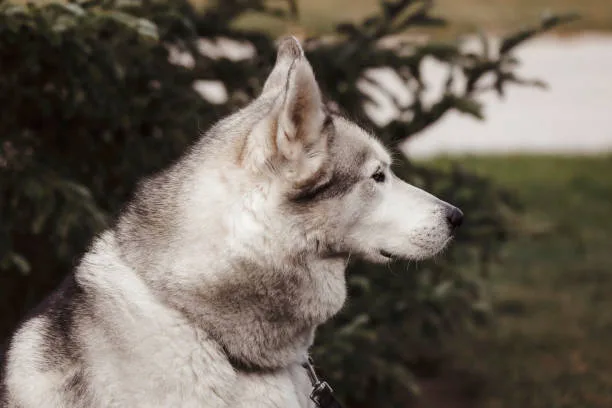
Proper Grooming and Coat Care
Properly grooming and caring for a Siberian Husky’s coat is essential to maintain its health and appearance. Regular brushing is crucial to minimize shedding and keep the coat free of tangles and mats.
The AKC Siberian Husky standard emphasizes the importance of using a pin brush and a slicker brush to gently remove loose hair and prevent matting. Additionally, bathing should be done sparingly to preserve the natural oils in the Husky’s double coat, in accordance with AKC recommendations.
When bathing is necessary, using a mild dog shampoo and thoroughly rinsing the coat is vital to prevent skin irritation. Proper coat care not only adheres to the AKC standards but also contributes to the overall well-being and comfort of the Siberian Husky.
Regular brushing using a pin brush and slicker brush is crucial to minimize shedding and prevent matting.
Akc siberian husky standard
Bathing should be done sparingly with a mild dog shampoo to preserve the natural oils in the Husky’s double coat.
With your Siberian Husky's coat now receiving the best care, you might notice their behavior becoming more engaging and even puzzling at times. Delve deeper into understanding your furry companion's quirky habits by exploring the mysteries behind their intense gaze in our featured article, The Enigmatic Stares of Your Husky.
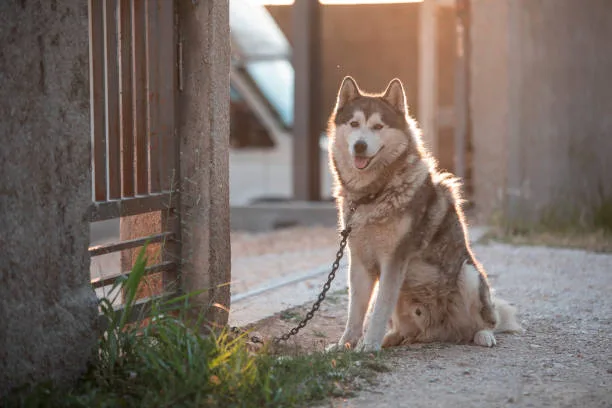
Socialization and Training Needs
The Akc siberian husky standard emphasizes the crucial role of early socialization and consistent training in nurturing a well-behaved Siberian Husky. Proper socialization during the puppy stage is imperative to ensure that the husky develops positive interactions with people, other animals, and various environments.
It helps in shaping their behavior and temperament, making them more adaptable and less prone to anxiety or aggression in unfamiliar situations. Furthermore, ongoing training is essential to harness the intelligence and responsive nature of the Siberian Husky. This breed thrives on mental stimulation and craves activities that engage their sharp minds.
Consistent training not only establishes a strong bond between the owner and the husky but also helps in managing their high energy levels effectively. It’s important to understand and cater to the specific training needs of huskies, incorporating a mix of obedience, agility, and interactive exercises to keep them mentally and physically engaged. Both early socialization and consistent training, as outlined by the Akc siberian husky standard, are instrumental in shaping a well-adjusted, obedient, and sociable companion.
Failing to provide adequate socialization and training may lead to behavioral issues and challenges in managing the exuberance of this spirited breed. Therefore, adhering to these guidelines is essential for the overall well-being and positive development of the Siberian Husky..
To delve deeper into the nuances of Siberian Husky ownership and understand the sheer scope of caring for these magnificent animals, consider exploring our comprehensive feature, "Managing a Larger Husky Pack: Beyond the Count of 20." This insightful article sheds light on the realities and considerations when nurturing a growing pack of this majestic breed. Managing a Larger Husky Pack: Beyond the Count of 20.
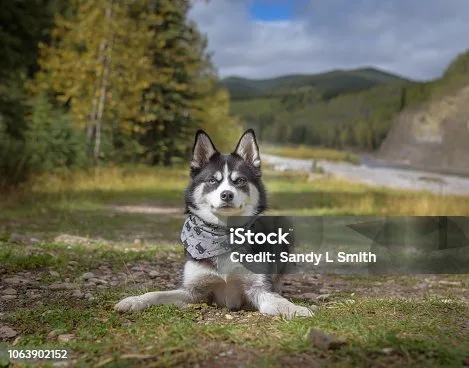
Health Screenings and Vaccinations
Health screenings and vaccinations are crucial aspects of maintaining the well-being of Siberian Huskies in accordance with the AKC Siberian Husky standard. Regular health screenings, including eye exams and hip evaluations, are essential for identifying potential health issues early on.
These screenings help in the prevention and management of genetic concerns such as eye problems and hip dysplasia, which are common in Huskies. Additionally, adhering to a recommended vaccination schedule is vital to protect Siberian Huskies from contagious and potentially life-threatening diseases.
- Health Screenings: Regular eye examinations and evaluations for hip dysplasia are imperative to detect and address potential health issues at an early stage.
- Vaccination Schedule: Following the AKC guidelines for vaccinations is essential in safeguarding Siberian Huskies from infectious diseases that can jeopardize their health and well-being.
By staying attentive to health screenings and vaccinations as prescribed by the AKC Siberian Husky standard, owners can significantly contribute to the long-term health and quality of life of their beloved Huskies.
To ensure your Siberian Husky's well-being extends beyond their healthcare, consider exploring our curated list of 20 Unique Names for Male Red Huskies. Naming your companion is the first step in forging a lifelong bond filled with adventure and companionship.
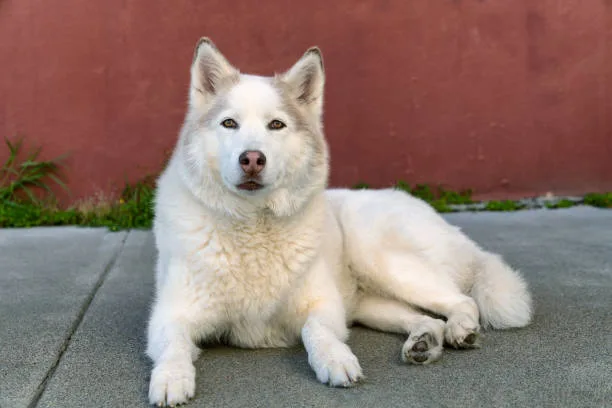
Understanding the Husky Temperament
Siberian Huskies are known for their friendly and gentle nature, as emphasized by the Akc siberian husky standard. They exhibit a strong sense of camaraderie and are generally good-natured with people and other dogs, reflecting their historical role as sled dogs in close-knit packs.
This breed tends to be affectionate, alert, and eager to please, making them amenable to training and companionship. However, their independent streak and natural instincts may lead to occasional stubbornness, requiring patient and consistent guidance.
It is important for owners to understand and respect the Husky temperament, appreciating their loyalty and propensity for vocalization in certain situations. Socialization and positive reinforcement play vital roles in nurturing a well-adjusted and sociable Husky, aligning with the AKC’s emphasis on early socialization and consistent training for a well-behaved Siberian Husky.
Proper care and handling of Siberian Huskies should be attuned to their spirited but amiable disposition, ensuring a harmonious and fulfilling relationship between owners and their Husky companions..
Understanding the distinctive temperament of Siberian Huskies is crucial for providing them with the right care and training. For a deeper exploration of their developmental stages and behavior nuances, delve into our detailed article on the growth timeline of a Siberian Husky.

Temperature Considerations for Comfort
Siberian Huskies are well-adapted to cold climates due to their thick double coat, but their temperature tolerance still requires careful consideration. Akc siberian husky standard emphasizes providing a living environment that ensures their comfort and well-being in relation to climate and temperature control.
For instance, in hot weather, it’s crucial to offer ample shade, cool shelter, and access to fresh water to prevent overheating. During colder seasons, providing a cozy, insulated shelter and protecting them from harsh winds is essential.
Akc siberian husky standard also highlights the importance of monitoring their outdoor exposure in extreme temperatures to prevent discomfort or health issues. It’s vital to pay close attention to signs of heat or cold stress in huskies and adjust their living conditions accordingly to maintain optimal comfort levels.
Akc siberian husky standard further recommends avoiding prolonged exposure to high temperatures, such as leaving them in a car or in direct sunlight for extended periods.
Additionally, ensuring proper ventilation in their living area to prevent overheating is an essential consideration emphasized by the AKC guidelines. By following these temperature-related guidelines, husky owners can create a safe and comfortable environment that aligns with the AKC’s standard for their well-being.
To ensure your Siberian Husky thrives in your care, adhering to the AKC's climate and temperature guidelines is essential. For further insights into understanding your Husky's behavior, particularly nighttime howling, explore our detailed article, uncovering the reasons behind a Husky's night howls.
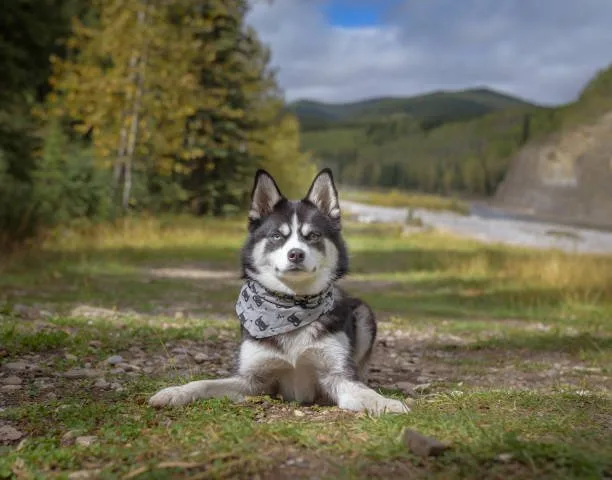
The Importance of a Conducive Living Environment
American Kennel Club: Akc siberian husky standard
A conducive living environment for an Akc siberian husky standard is vital to ensure their well-being and happiness. Siberian Huskies are known for their high energy levels and need ample space to move around and play.
Akc siberian husky standard recommends a living space that provides enough room for these energetic dogs to exercise and thrive. This includes a secure and spacious yard where they can run freely and engage in physical activities to release their pent-up energy.
Additionally, suitable indoor space is essential for times when outdoor conditions are not favorable. It should be noted that Huskies are prone to boredom if confined in a limited space for extended periods, possibly leading to destructive behavior.
Moreover, since they are highly social animals, an Akc siberian husky standard living environment should facilitate interaction with their human family members. This ensures that they receive the attention and stimulation they require, promoting their overall mental and emotional well-being.
In essence, by adhering to the AKC’s recommendations for a conducive living environment, Siberian Husky owners can provide the ideal setting for their pets to lead healthy and fulfilling lives..
To ensure your active Siberian Husky has a comfortable and suitable home, it's crucial to design spaces that cater to their unique needs for exercise and movement. Discover the full spectrum of age-appropriate environments and tips for your Husky's well-being by exploring our comprehensive guide, determining your Husky's age.
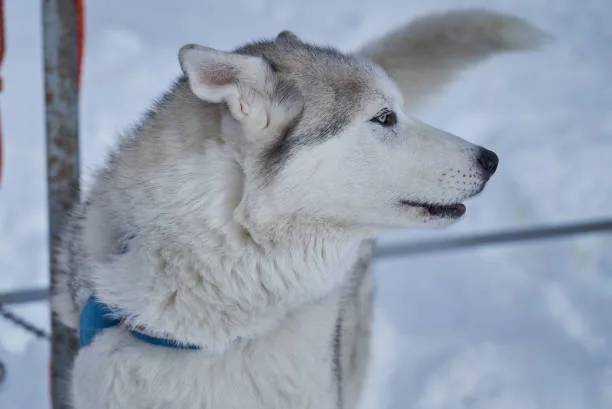
Common Health Issues and Prevention
Siberian Huskies are generally healthy dogs, but they are prone to certain common health issues that owners need to be aware of and proactively address in line with AKC Siberian Husky standard. These include eye problems such as cataracts and progressive retinal atrophy, as well as genetic disorders like hip dysplasia and certain types of cancer.
Regular health screenings and check-ups are crucial for early detection and effective management of these conditions, aligning with AKC recommendations. Preventive care, including adhering to the vaccination schedule and understanding the breed’s potential hereditary conditions, is pivotal in promoting the overall well-being and longevity of Siberian Huskies.
Reddit Akc siberian husky standard
It is important for owners to be vigilant about their Siberian Husky’s health and to understand the potential genetic concerns that the breed may face.
By staying proactive and working closely with a veterinarian, they can better manage the health of their beloved Husky and ensure a happy, healthy life.
For those with a keen interest in expanding their knowledge of Siberian Huskies, an exploration into their reproductive habits offers additional insights. Discover the typical litter size for a first-time Husky mother by visiting "Puppy Litter Expectations for First-Time Husky Moms."
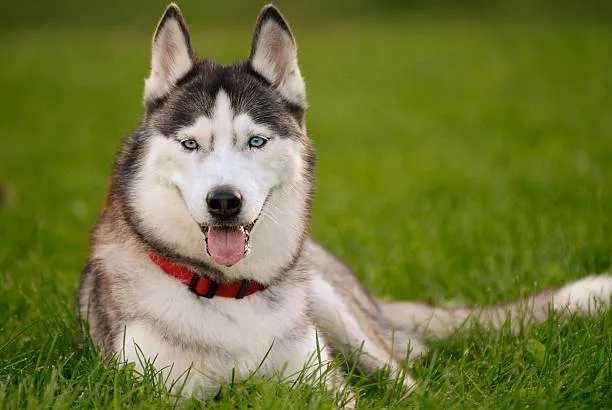
Proper Identification and Microchipping
Proper identification and microchipping play a crucial role in ensuring the safety and well-being of Siberian Huskies, in line with the AKC Siberian Husky standard. This involves affixing visible identification tags to the dog’s collar, containing essential contact information for the owner.
Additionally, microchipping is recommended as a permanent form of identification, allowing for quick and reliable retrieval of the Husky in case they get lost or separated from their owner. The AKC emphasizes the importance of both forms of identification for the protection of Siberian Huskies, especially considering their adventurous and independent nature.
Furthermore, it is essential for owners to keep the contact details associated with the tags and microchip up to date, ensuring prompt reunification with the Husky in case of any unforeseen circumstances. Ultimately, adherence to the AKC standards regarding proper identification and microchipping significantly contributes to the overall safety and security of Siberian Huskies.
Using visible identification tags and microchipping are recommended by the AKC as crucial measures for the safety and security of Siberian Huskies.
Both forms of identification, namely visible tags and microchipping, aid in promptly reuniting lost or separated Huskies with their owners.
On Quora about: Akc siberian husky standard
Owners are advised to ensure that the contact information associated with the identification tags and microchip is kept up to date in accordance with AKC standards.
Understanding the importance of tagging and microchipping your Siberian Husky is just the first step in ensuring their safety. Extend your knowledge by exploring further care tips by reading our comprehensive guide on the resilience of Huskies in cold environments: The Stamina of Siberian Huskies in Winter Weather.
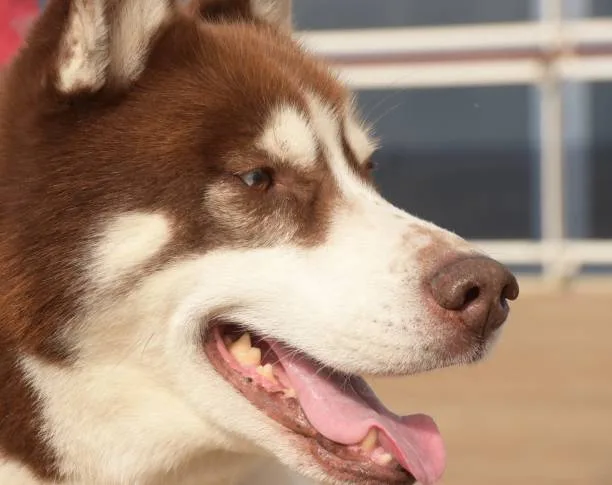
Travel and Transportation Recommendations
Traveling with your Siberian Husky can be a rewarding experience if done responsibly and in line with the Akc siberian husky standard. Proper transportation is vital to ensure the safety and well-being of your Husky.
When embarking on trips, always prioritize the comfort of your Husky by providing ample space for them to move around and lay down comfortably. Additionally, it is crucial to secure your Husky in a well-ventilated crate or use a safety harness designed for large breeds to ensure they stay secure during the journey.
Before traveling, make sure your Husky is accustomed to the mode of transportation to minimize anxiety or stress.
Plan regular stops for bathroom breaks, hydration, and short walks to keep your Husky comfortable and relaxed. Adhering to the AKC’s guidance on travel safety can help maintain your Siberian Husky’s well-being and ensure smoother journeys for both you and your beloved pet.
Ensuring your Siberian Husky's safety and comfort while traveling is just the beginning of responsible pet ownership. For more insights on maintaining a clean and hair-free environment after your journey, explore our guide on Effective Techniques for Husky Hair Removal.
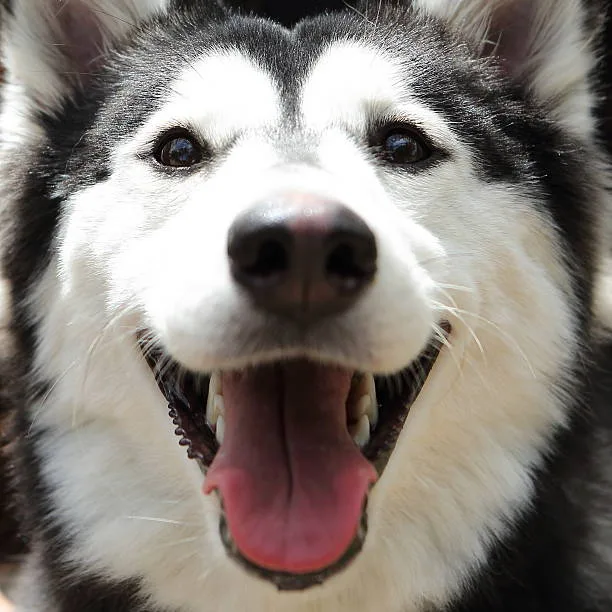
Responsible Breeding Practices
Responsible breeding practices play a pivotal role in upholding the health and integrity of the Siberian Husky breed. Adhering to the AKC Siberian Husky standard ensures that breeding is conducted with the utmost care and consideration for the breed’s well-being.
It involves thorough health screenings of parent dogs to identify and mitigate hereditary health issues, thus promoting the continuation of healthy bloodlines. Additionally, responsible breeding practices encompass providing a nurturing and supportive environment for both the parent dogs and their offspring.
This includes adequate space for physical activity, proper nutrition, and regular veterinary check-ups. By following these guidelines, breeders contribute to the preservation of the Siberian Husky’s unique characteristics and overall health.
Overall, responsible breeding practices, as outlined by the AKC Siberian Husky standard, are crucial for maintaining the breed’s health and integrity.
It is a testament to the dedication of breeders in prioritizing the well-being of the Siberian Husky and ensuring that future generations embody the desired traits and vitality.
Continuing our exploration of canine themes, we invite you to delve into a cinematic universe where dogs take center stage. For a journey through the most heartwarming and exciting dog movies, peruse IMDB's Top 100 Dog Films.
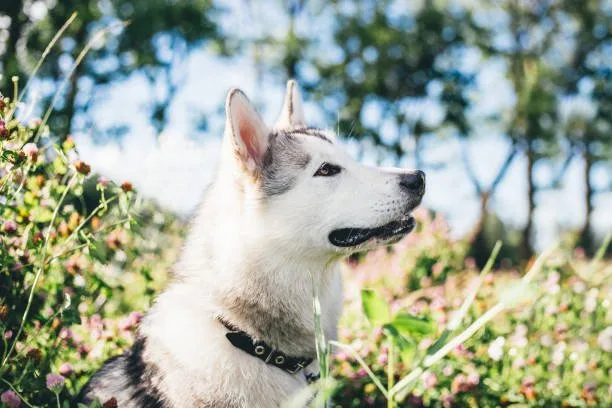
Managing Husky Health and Genetic Concerns
Siberian Huskies are prone to certain health issues, including eye problems and genetic disorders, making it crucial for owners to stay vigilant about their pet’s well-being. Regular health screenings are essential in identifying and addressing any potential health concerns, in line with the Akc siberian husky standard.
Adhering to the vaccination schedule recommended by the Akc is vital in preventing the risk of contagious diseases and ensuring a healthy life for the husky. Furthermore, understanding the breed’s typical lifespan and potential hereditary conditions is key to proactively managing any genetic predispositions.
By prioritizing these aspects of care, husky owners can significantly contribute to their pet’s long-term health and quality of life.
It is also crucial to be mindful of any updates or new recommendations issued by Akc, as ongoing advances in veterinary medicine and husky-specific research can provide valuable insights for proactive health management. By staying informed and proactive, husky owners can significantly contribute to their pet’s long-term health and quality of life.
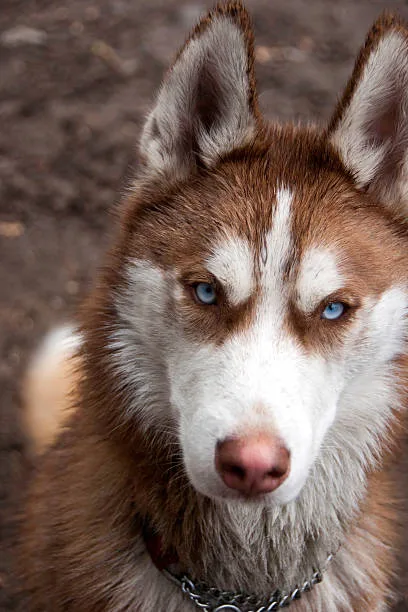
Husky Coat and Shedding Care
Siberian Huskies have a thick double coat that requires consistent maintenance to keep it healthy. Regular brushing is essential to manage their heavy shedding periods, especially during seasonal changes.
According to the AKC Siberian Husky standard, brushing their coat helps to remove loose fur, prevent matting, and distribute natural oils for a lustrous appearance. Special grooming tools such as undercoat rakes and slicker brushes are recommended to effectively manage their shedding and maintain coat health.
Additionally, proper grooming not only supports their physical well-being but also contributes to their aesthetic appeal, as a well-groomed coat enhances their overall appearance.
Adhering to the AKC standards for coat care ensures that the Siberian Husky’s coat remains in optimal condition, minimizing shedding and promoting a healthy, glossy coat.
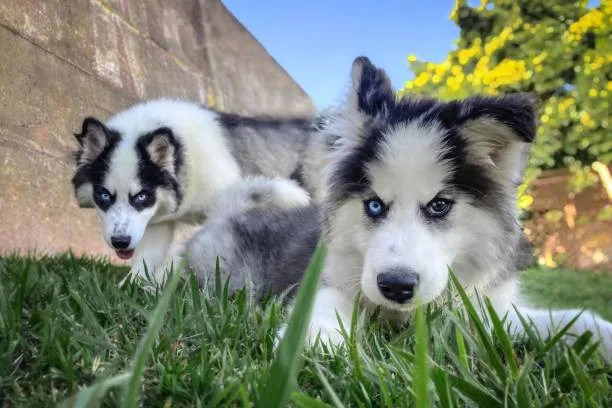
Exercise and Mental Stimulation for Huskies
Siberian Huskies are renowned for their high energy levels, requiring ample physical activities, exercise regimens, and mental stimulation to maintain their well-being. Adequate exercise and mental challenges are crucial for ensuring a balanced and contented dog.
Obedience training holds significant importance in this regard, serving as a means to provide mental stimulation and fulfill the breed’s need for purposeful activities. Through structured training sessions and interactive play, Huskies can expend their energy productively and develop a strong bond with their owners.
This approach not only aligns with the AKC Siberian Husky standard but also contributes to the overall happiness and fulfillment of the breed.
Regular physical activities, exercise regimens, and mental stimulation are imperative to meet the high energy levels of Siberian Huskies.
Obedience training is vital in providing mental challenges and addressing the breed’s need for purposeful activities.
Structured training sessions and interactive play can help Huskies expend their energy productively and foster a strong bond with their owners.
This approach is in line with the AKC Siberian Husky standard and significantly contributes to the overall happiness and fulfillment of the breed.
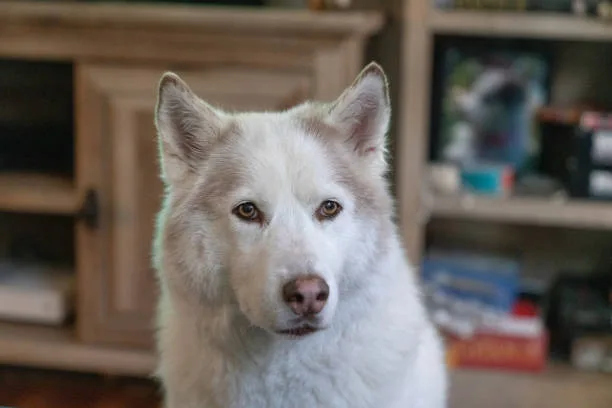
Feeding and Dietary Guidelines for Husky Health
Siberian Huskies have specific dietary requirements that directly impact their health and well-being. A balanced diet is crucial for maintaining their energy levels and overall fitness.
Akc siberian husky standard emphasizes the importance of meeting these needs to ensure the Husky’s optimal health. It’s essential to provide a high-quality, well-balanced diet that consists of protein, fats, carbohydrates, vitamins, and minerals tailored to the breed’s needs. Feeding portion sizes should be appropriate for the Husky’s size and activity level, and adherence to a regular feeding schedule is crucial for their digestive health and weight management.
Akc siberian husky standard provides guidelines for determining the right portion sizes and feeding frequency, which can contribute to maintaining a healthy weight and reducing the risk of obesity-related health issues. When choosing food for a Siberian Husky, it’s important to select a high-quality commercial diet or formulate a well-balanced homemade diet under the guidance of a veterinary nutritionist. Akc siberian husky standard recommends foods that are rich in animal-based proteins and healthy fats, with limited fillers and additives.
Moreover, it’s imperative to be mindful of any dietary sensitivities or allergies specific to the breed and adjust their diet accordingly. In summary, a Husky’s diet plays a pivotal role in their overall health, and adhering to Akc siberian husky standard guidelines for portion sizes, feeding schedules, and food selection is vital for maintaining their well-being and longevity. By prioritizing their nutritional requirements, owners can ensure that their Siberian Huskies lead healthy and active lives..
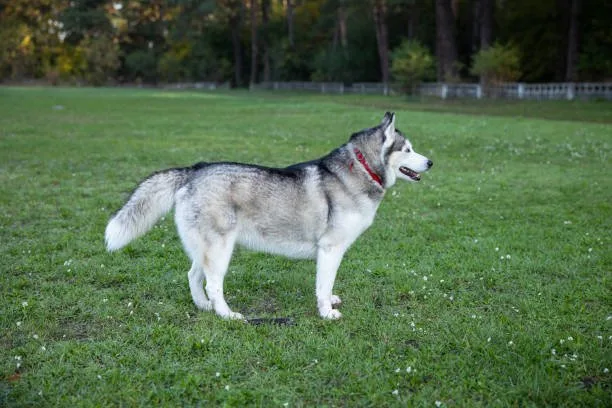
The Sociable Siberian: Husky Temperament and Socialization
Siberian Huskies are renowned for their friendly and social nature, making them wonderful companions for families and individuals alike. Their breed-specific traits, including their outgoing and gentle temperament, make early socialization and consistent training essential in shaping their behavior.
This ensures that they grow into well-adjusted and well-behaved dogs. Furthermore, in addition to socialization and training, it is important to consider breed-specific legislation and the responsibilities of ownership when creating a conducive social environment for these spirited dogs.
Adhering to the Akc siberian husky standard and providing the necessary socialization and training not only enhances the Husky’s temperament but also fosters a harmonious relationship between the dog and its human family.
It is crucial to recognize that Huskies thrive on positive interactions and stimulation, and by understanding their specific social needs, owners can cultivate an environment where their Huskies can flourish.
Taking the necessary steps to adhere to the Akc siberian husky standard in terms of socialization and training lays the foundation for a fulfilling companionship with these affectionate and sociable dogs.
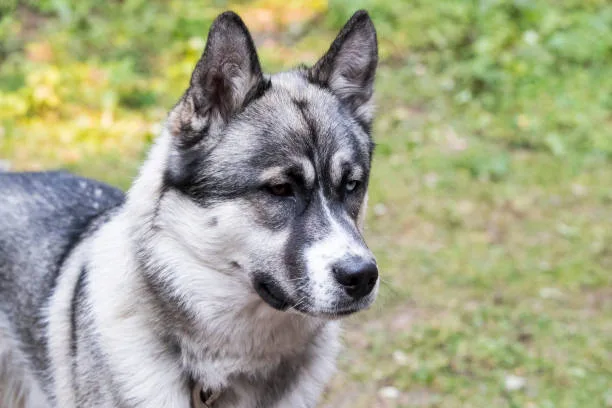
Conclusion: Maintaining the AKC Standard in Daily Care
Maintaining the AKC Siberian Husky standard in daily care is crucial for ensuring the well-being and contentment of these spirited canines. Adhering to the comprehensive guidelines set by the AKC not only promotes the physical health of Siberian Huskies but also contributes to their overall happiness and vitality.
By consistently implementing the recommended diet, exercise, grooming practices, and training methods, owners can provide their Huskies with a fulfilling and enriching lifestyle that aligns with the breed’s specific needs. This commitment to upholding the AKC standard creates a harmonious environment where Siberian Huskies can thrive, fostering mutual happiness and strengthening the bond between these remarkable dogs and their owners.
Adhering to the AKC standard guarantees that the nutritional needs of Siberian Huskies are met, promoting robust health and sustained energy levels.
Consistent exercise routines tailored to their requirements help to keep them physically fit, mentally stimulated, and emotionally content.
Regular grooming based on AKC recommendations not only ensures the maintenance of their distinctive coat but also serves as a bonding activity between owners and their Huskies, fostering trust and companionship.
Furthermore, the emphasis on early socialization and positive training methods laid out by the AKC standard nurtures well-mannered and sociable Huskies, contributing to harmonious interactions with other animals and individuals.
Overall, maintaining the AKC standard in daily care provides Siberian Huskies with the best possible quality of life, allowing them to embody their characteristic exuberance and companionship while thriving in a nurturing and attentive environment.
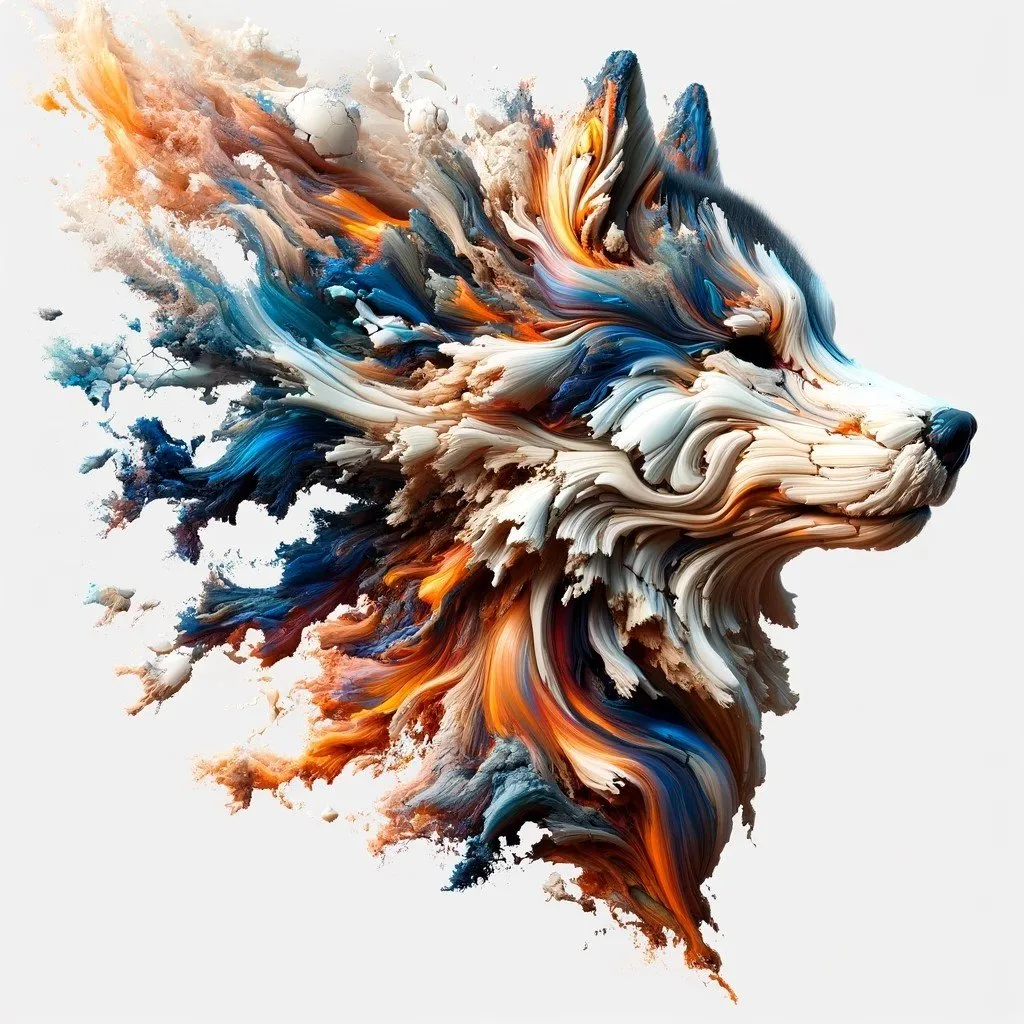
Leave a Reply